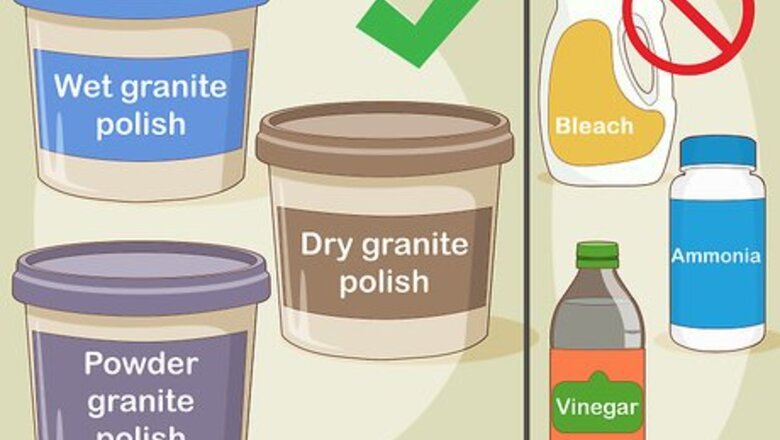
views
Buying and Applying Polish

Select a granite-safe polish. General polishes may damage the surface if they contain ammonia, bleach, or vinegar. You can buy wet or dry polish. Dry powder (which you mix with water) can be better at removing scratches and is less expensive. Don't use any harsh chemicals or products to polish your granite.
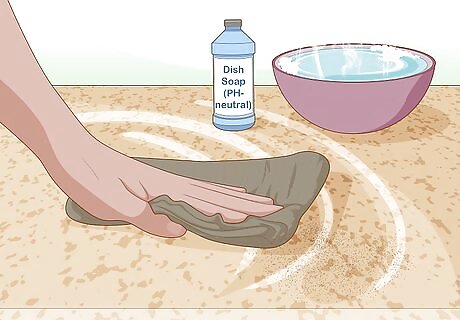
Clean the granite with warm water and dish soap. Using a dish cloth, gently wipe the stone to remove dirt or debris. Use a mild pH-neutral dish soap without ammonia or bleach. Harsh chemicals could strip away sealant. Always clean the granite's surface before you start polishing it.
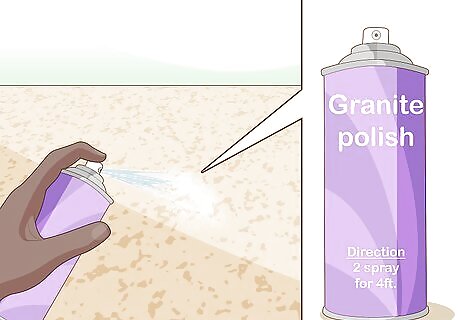
Spray granite polish or cleaner over the entire area. Soap is good for cleaning but can leave granite looking dull so a stone-specific polish will restore shine. Never use a gritty or coarse product as this might scratch the surface or eat at the sealant. Less is more. Only use the recommended amount of polish (read the box as using too much will leave a dull residue. A thorough cleaning should be done once a week to make your stone sparkle.
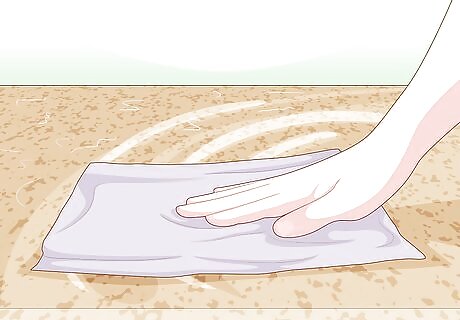
Dry the granite completely. Leaving product or water on the surface can cause streaks or stains. Use a soft cloth or paper towel to wipe away excess liquid.
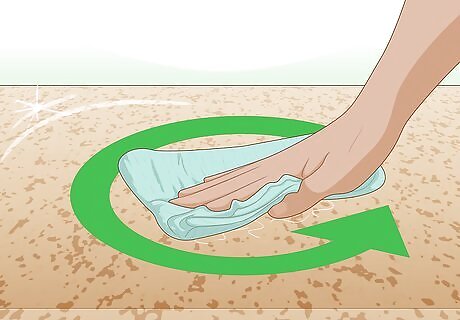
Buff with a dry microfiber towel. A microfiber cloth contains tiny split fibers that make it more absorbent than cotton, meaning it will soak up leftover residue instead of just smearing it around. Rub in small circles with firm pressure.
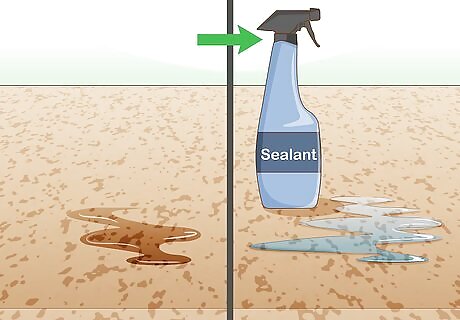
Check to see if your granite needs to be resealed. To do this, put a few drops of water on your countertop. If it leaves a watermark or soaks into the stone, you should seal your granite. You should seal granite after polishing for best results.
Making Your Own Granite Polish
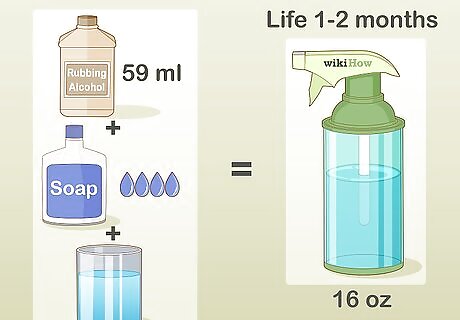
Mix rubbing alcohol, dish soap, and water in a spray bottle. Pour ⁄4 cup (59 mL) of rubbing alcohol into a 16 oz (450 g) bottle, then add a few drops of dish soap. Fill the rest of the bottle with water. Shake to combine. Use a dish soap that doesn't have antibacterial additives which can leave streaks on the surface of the granite. You can swap the dish soap for castile soap for a more environmentally-friendly alternative. Store your spray at room temperature. It should last for 1 to 2 months.
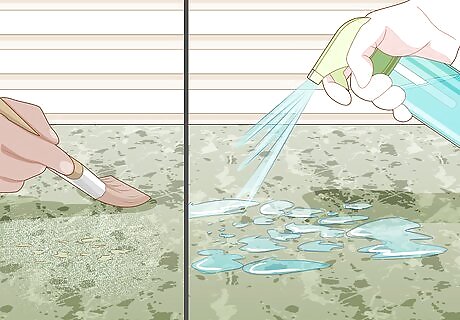
Spray the polish on your granite. Make sure you've cleaned any spills or sticky residue off the surface with a damp cloth before spraying or it won't be as effective.
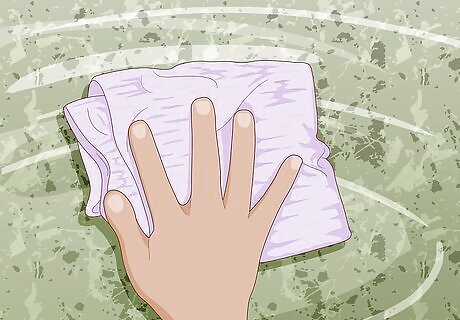
Dry thoroughly with a clean towel. You don't need to rinse with water - simply buff the area with a soft microfiber towel, making sure not to leave excess cleaner on the granite.
Using Power Tools for Edges
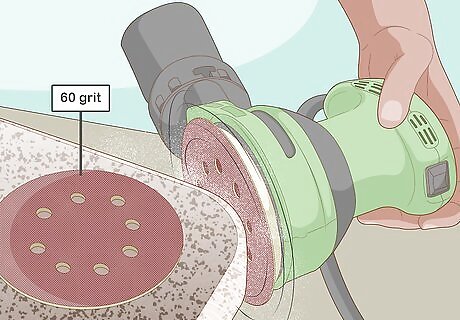
Shape the edges with a power sander. Use a 40 or 60 grit sandpaper disc to even out the edges. A finer grit sandpaper (like 120 or 150 grit) will work if the edges just need minor shaping. Always wear a dust mask and safety glasses to protect yourself when using a power sander.
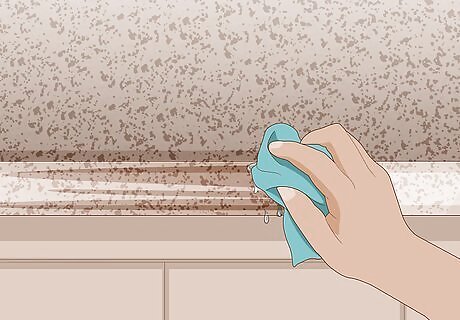
Wipe the edges with a damp cloth. This will remove any debris or particles left over from the sanding.
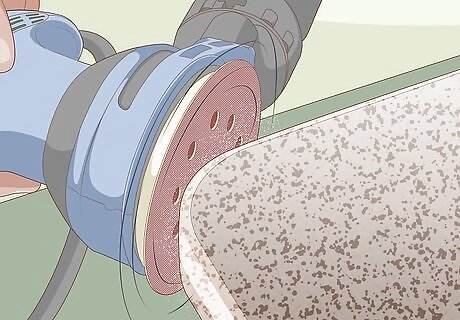
Continue sanding with a finer grit sandpaper. Once your edges are shaped, you'll want to use a small 600 grit sandpaper to put on the finishing touches and smooth out the texture.
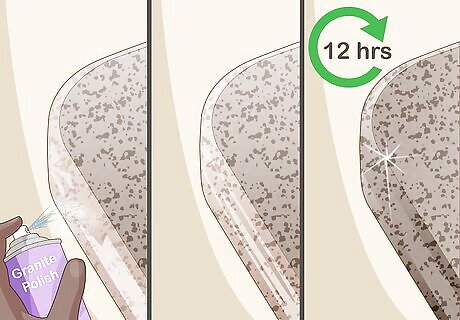
Apply polishing spray to the granite. Use a microfiber towel to buff into the surface and dry. Granite typically takes at least 12 hours to dry completely.
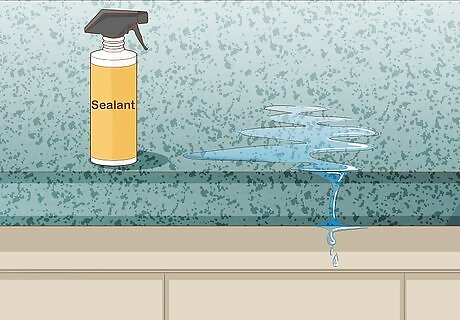
Seal the edges. This will protect the granite and make it easier to clean. When sealing granite, keep in mind that the edges will often require 2 applications of sealant.
Taking Care of Granite
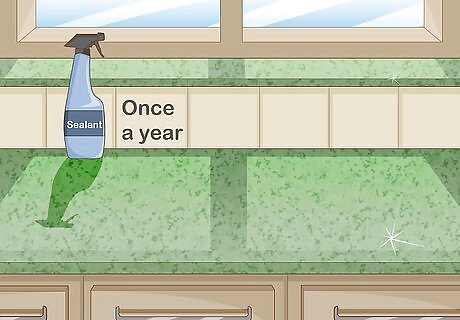
Seal your granite once a year. Unsealed stone is more vulnerable to stains. In areas that get used a lot or are exposed to water frequently (like around a sink), have a professional reseal the granite annually. Sealant in lower-use areas can last up to 10 years if cared for properly.
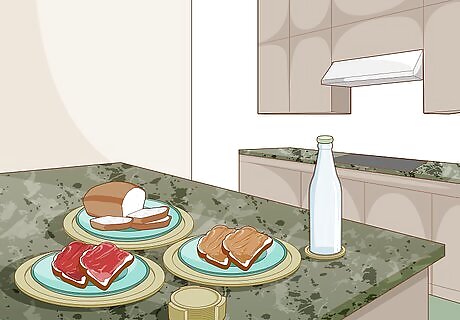
Use coasters or placemats for food and drinks. Letting food that has dyes or oils in it sit on granite will often cause stains. Always use a cutting board when cooking, too, instead of placing food directly on the counter. Heat can also harm granite so don't put hot pots or pans directly on the stone. Use a trivet or hot pad. If you have granite floors, lay down some rugs to minimize grit being etched into the stone from being walked on.
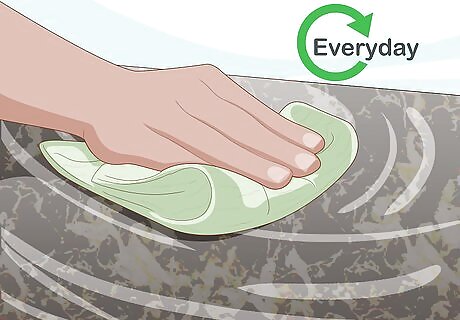
Wipe down granite daily. It’s not necessary to use a cleaner on your stone every day but simply wiping it with a dry cloth can remove grime and any spills, avoiding permanent stains or scratches. Vacuum floors often, as well. Make sure your vacuum isn't dragging on the surface or scratching it.



















Comments
0 comment